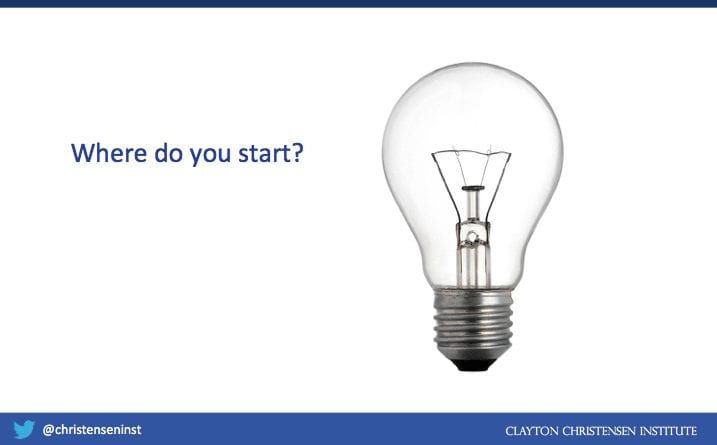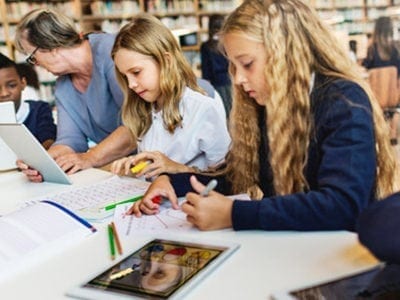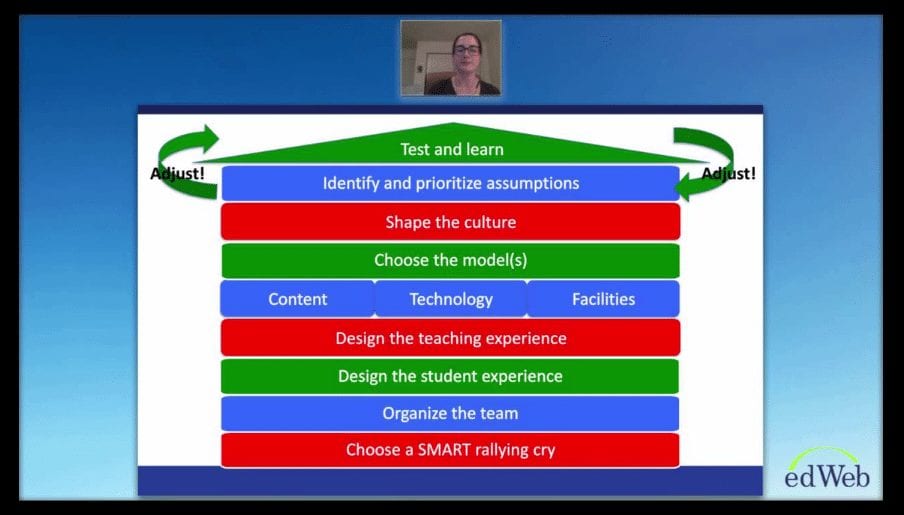Getting Blended Learning Right in Your School
 When implementing a blended learning model, it is important for schools to be aware of key components and steps to integrate into their plan. In “Five Tips for Getting Blended Learning Right,” hosted by edWeb.net and sponsored by Achieve3000, Julia Freeland Fisher, Director of Education at the Clayton Christensen Institute, gave schools the tips they need to successfully implement blended learning.
When implementing a blended learning model, it is important for schools to be aware of key components and steps to integrate into their plan. In “Five Tips for Getting Blended Learning Right,” hosted by edWeb.net and sponsored by Achieve3000, Julia Freeland Fisher, Director of Education at the Clayton Christensen Institute, gave schools the tips they need to successfully implement blended learning.
Although it may seem easier to dive right in, schools cannot go technology-first into a blended learning model. Teachers cannot be expected to figure out what to do with technology, but rather  should be expected to use the support it provides. Since blended learning is about changing instruction, technology must follow an instructional plan. It is also important for teachers to be on blended learning design teams. They should be participating in the design process, rethinking blended learning strategies, and solving the problems they are actually facing within the classrooms.
should be expected to use the support it provides. Since blended learning is about changing instruction, technology must follow an instructional plan. It is also important for teachers to be on blended learning design teams. They should be participating in the design process, rethinking blended learning strategies, and solving the problems they are actually facing within the classrooms.
Teachers are often expected to be a “jack of all trades,” but different people have different strengths as well as motivations. A blended learning model must consider these factors. What motivated teachers to get into the profession in the first place? In addition to designing around the student experience, schools should design around the teacher experience by integrating these factors into their blended learning model.
J
Finally, it is important to evaluate software by use case. Julia recommended assessing what works best for what students in what circumstances. For example, the average does not necessarily speak to what worked best for every single student. Schools must delve deeper to figure out what worked well, and what didn’t work well, for each student in order to effectively serve student needs.
This broadcast was hosted by edWeb.net and sponsored by Achieve3000.
This article was modified and published by eSchool News.
About the Presenter
Julia Freeland Fisher is the Director of Education at the Clayton Christensen Institute, where she leads a team researching the effects of disruptive innovation on the public and private education landscape. Julia has published and spoken extensively on topics including the edtech market, new school models, and competency-based education policies and practices. Most recently, her research focuses on emerging tools and practices that leverage technology to expand students’ social capital by enhancing their access to new networks and their ability to navigate those networks. Follow Julia on Twitter @juliaffreeland.
Join the Community
Differentiating Instruction with Educational Technology is a free professional learning community (PLC) that provides educators, curriculum leaders, and industry members with a place to collaborate on best practices for using educational technology to differentiate instruction. Join the community to connect and work together with others committed to advancing differentiated instruction.
About the Sponsor
Achieve3000 reaches all students, PreK-12+, at their individual reading levels to accelerate their learning, improve high-stakes test performance, and prepare them for college and career success.





Comments are closed.